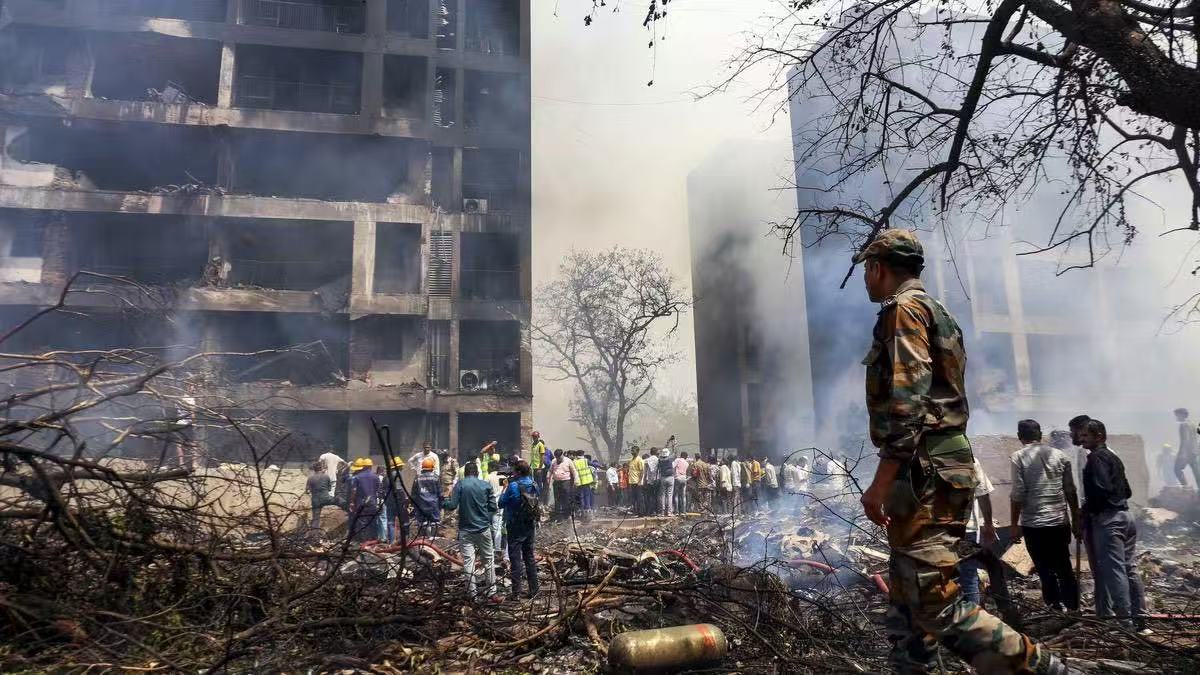A preliminary investigation into the tragic crash of Air India Flight 171, which killed all 260 people on board in June, has revealed a disturbing and unusual chain of events that unfolded in the first seconds after takeoff — and may hold the key to one of India’s most baffling aviation disasters.
Fuel Starvation Seconds After Takeoff
According to a newly released 15-page report, the Boeing 787 Dreamliner’s fuel control switches were inexplicably moved to the “cut-off” position shortly after departure from Ahmedabad, India — a configuration typically reserved for after landing. The abrupt fuel shutoff caused both engines to lose power almost instantly, initiating a total system failure.
The cockpit voice recorder captured a chilling exchange:
“Why did you do the cut-off?”
“I didn’t.”
While it remains unclear which pilot said what, this exchange has become the focal point of a global investigation involving Indian authorities, Boeing, GE, the U.S. NTSB, and UK aviation experts.
Desperate Seconds in the Sky
Flight 171 remained airborne for less than 40 seconds, reaching just 625 feet before crashing into a densely populated neighborhood. Though one engine began to relight, the aircraft had insufficient altitude or time for recovery. The Ram Air Turbine (RAT) — a last-resort emergency power generator — deployed automatically, confirming complete engine failure.
Experts suggest the landing gear wasn’t retracted, not due to oversight but because the crew had no time. “When both engines go out, you’re thinking survival — not switches,” one experienced 787 pilot said.
Could This Have Been an Accident?
Fuel cut-off switches on the Dreamliner are mechanically locked and guarded against accidental activation — requiring a deliberate upward pull before turning. Analysts describe accidental or simultaneous misactivation by both pilots as “highly unlikely.”
This makes the incident more troubling. Was it human error, confusion, or a deeper systemic failure? Investigators aren’t ruling anything out.
Some are now questioning whether the aircraft’s electronic systems could have played a role. Could an internal fault have triggered the cut-off switches electronically — without pilot input?
FAA Warning Ignored?
The report also reveals a 2018 FAA advisory noting issues with fuel control switches on certain Boeing aircraft — switches that share design similarities with the Dreamliner. While no mandatory action was issued, Air India did not carry out the recommended checks.
Could that decision have allowed a mechanical vulnerability to persist?
The Search for Clarity
Voice identification from the cockpit recording remains inconclusive. Experts insist more information is needed — especially a full transcript with speaker attribution, and ideally, cockpit video, which could confirm who moved the switches and when.
Former U.S. NTSB Managing Director Peter Goelz put it bluntly:
“The fact that someone in the cockpit shut those valves is deeply disturbing. The key question remains: who did it — and why?”
Not Fuel Contamination or Engine Faults
Investigators have ruled out fuel contamination and engine mechanical failure. Fuel samples tested clean, and no advisories have been issued for the Boeing 787 or GE GEnx-1B engines.
A Tragedy Still Unfolding
As the investigation continues, families mourn and aviation authorities search for answers. With critical questions unanswered — and the world’s eyes on the final report — Flight 171 may ultimately reshape how pilots, airlines, and regulators approach cockpit safety.
The industry now waits for clarity on a crash that, in the words of one investigator, “should never have happened. “



